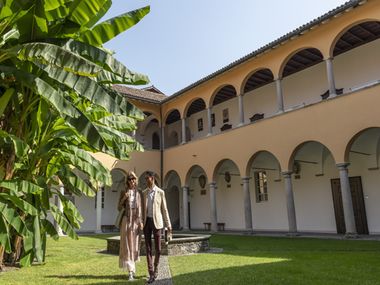Film, music and architecture. But not only! Sacred mounts, typical markets, ancient buildings, museums and art galleries: they all tell the story and history of the Lake Maggiore region.

Search on ascona-locarno.com
Film, music and architecture. But not only! Sacred mounts, typical markets, ancient buildings, museums and art galleries: they all tell the story and history of the Lake Maggiore region.

Locarno, the city on the Verbano, is internationally renowned for its Locarno Festival – one of the most important cultural events in Europe. The Piazza Grande, with its Lombardian arcades, is the pulsating heart of the city. It not only hosts the festival’s evening screenings but it is also the setting of many concerts and events. Memories of the past can be found at two Sacred Mounts in the region: the Madonna del Sasso Sanctuary and the Sacred Mount in Brissago.
Visit the newly renovated Castle of Visconti with the Rivellino, a work by Leonardo da Vinci and do not forget to walk through the narrow alleys, picturesque piazzas and patrician houses in the old part of town.
Culture is also a synonym of art: do not miss the new “Ghisla Art Collection” in Locarno, a foundation for modern and contemporary art, and the recently redone Museum of the San Materno Castle, an important artistic heritage of the village of Ascona. Last but not least: the Monte Verità, the hill that attracted intellectuals and artists in search of alternative values and lifestyles at the beginning of the 20th century.